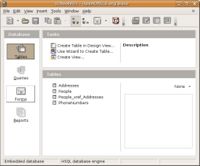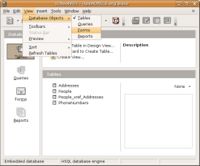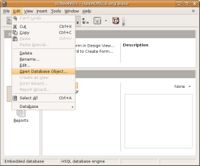CCNC/CCNC Module 5/Data entry using forms/Basic Form Operations
From WikiEducator
< CCNC | CCNC Module 5 | Data entry using forms
| Basic Form Operations |
Opening a Form | Using the Form wizard | Designing a Form | Saving a Form | Deleting a Form | Self Assessment | Summary & FAQs |
Contents
Working with Data Entry Forms
Upon completion of this tutorial the learner will be able to:
|
Using the toolbar to view the forms
The OpenOffice Base toolbar has a button that can be used to view all the existing forms.
Navigate the menus to view all the existing forms. Select View->Database Objects->Forms to see the forms in the current database.
Opening a form
To open an existing form click on the forms icon on the left hand side of the screen. Then double click on the name of the form you wish to open. Alternatively you can right click on the name of the form and then click on Open.
Or highlight (select) the form to open and use the Edit menu to open the form as a database object.
Test your knowledge



